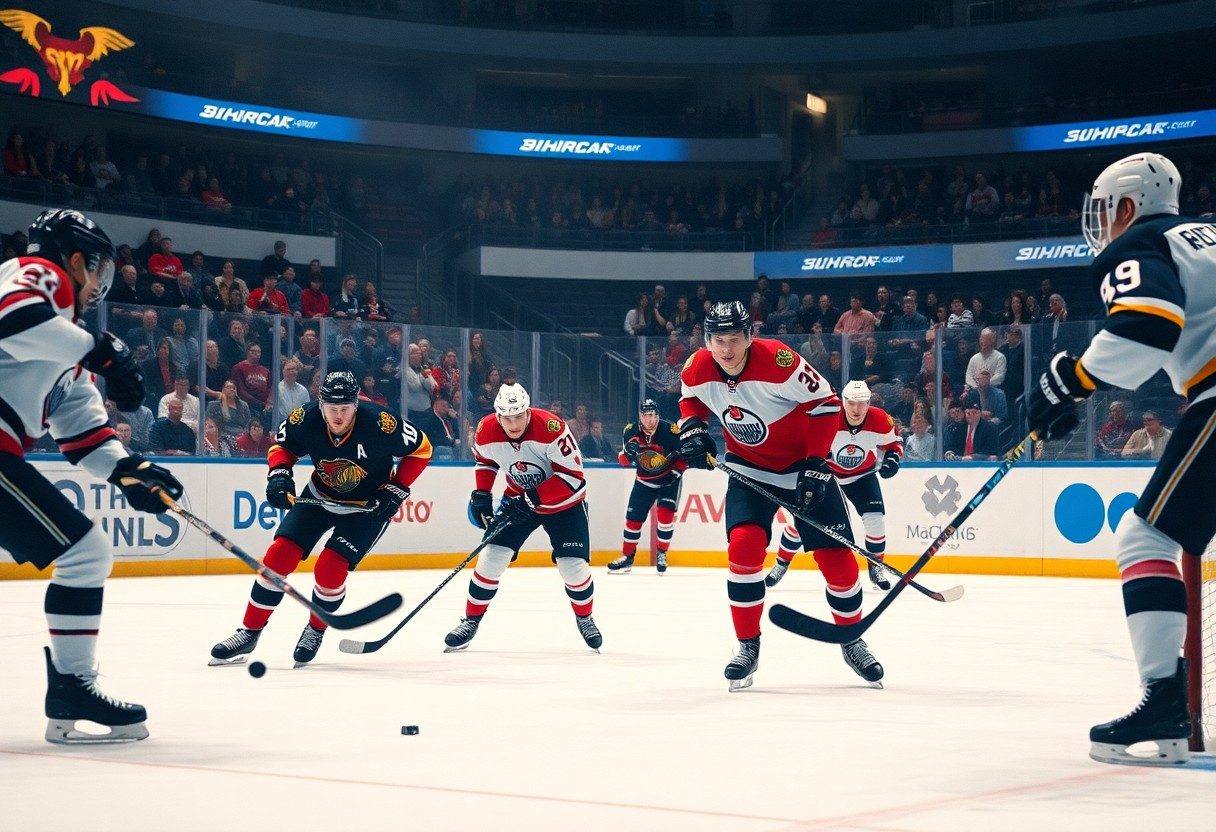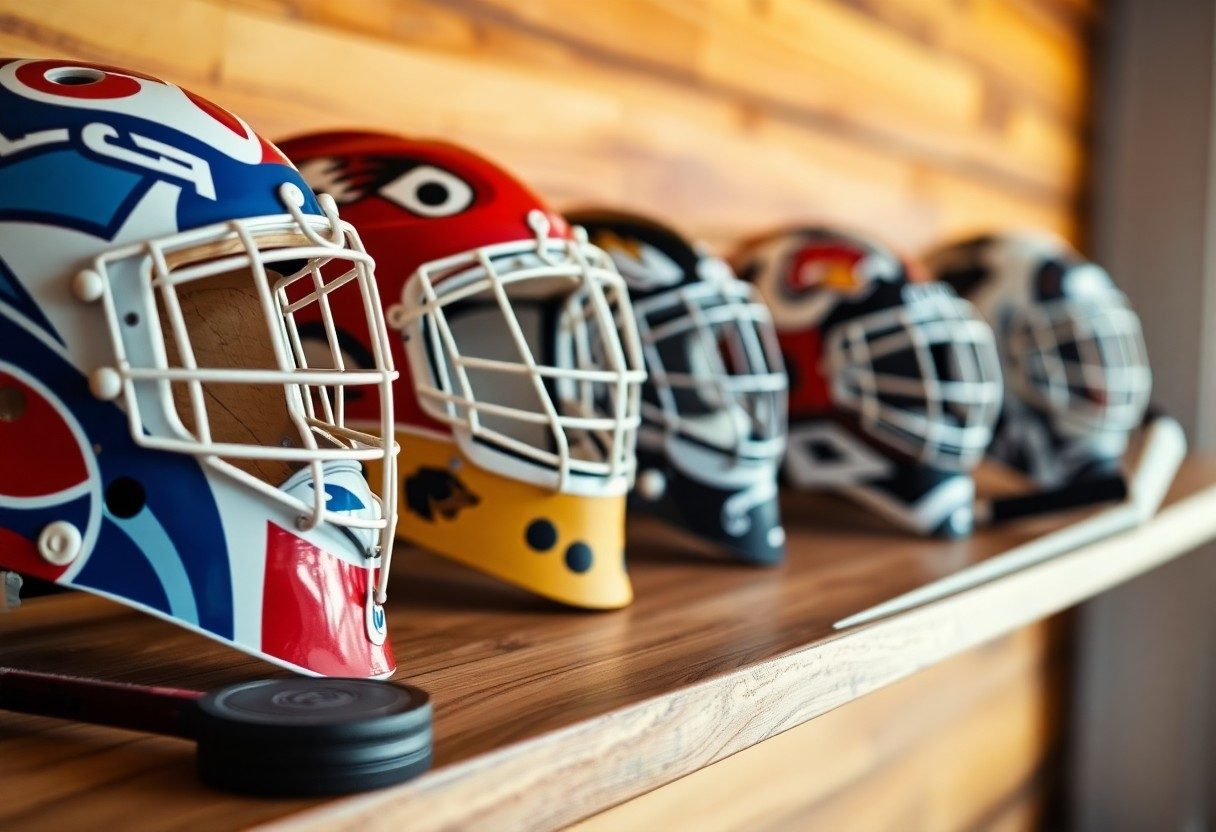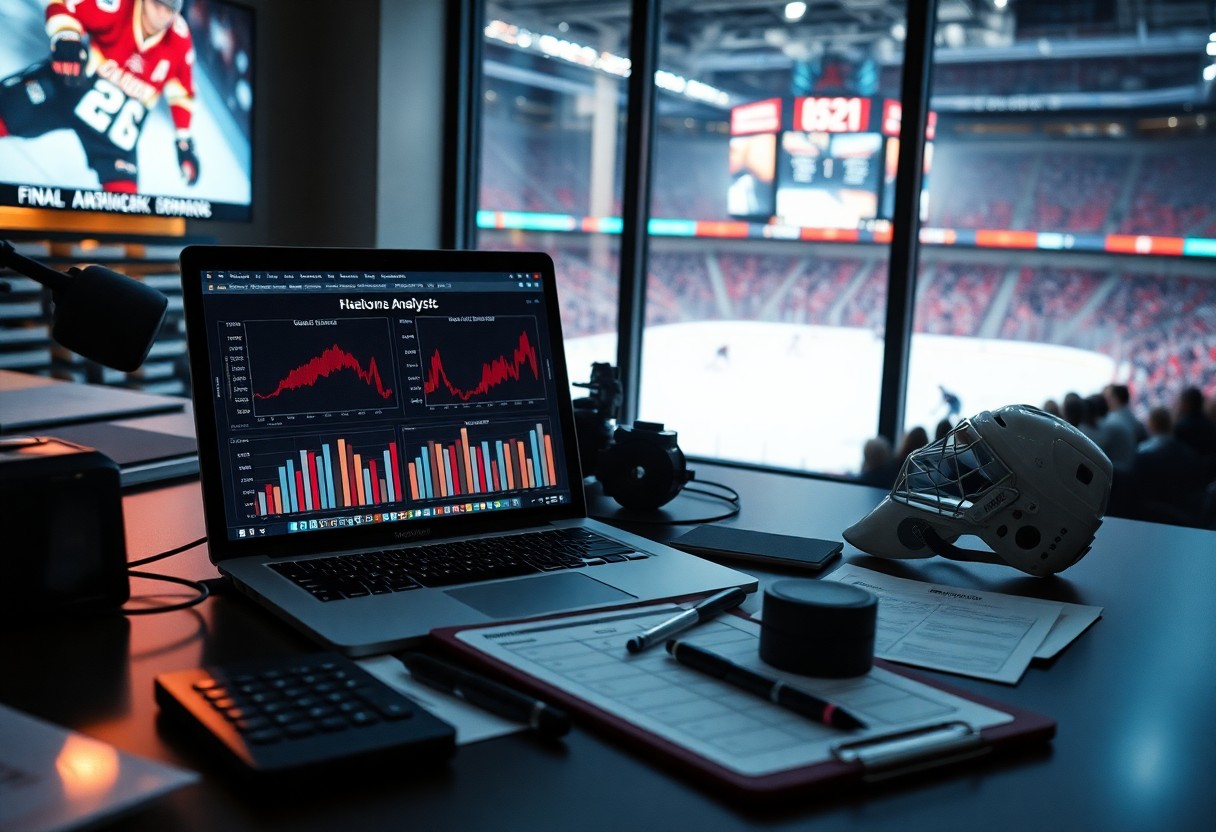Qualities that define elite NHL players extend beyond physical prowess, encompassing a blend of mental resilience, strategic thinking, and teamwork. These athletes exhibit exceptional talent while demonstrating leadership on and off the ice. Their ability to adapt under pressure and maintain competitive spirit sets them apart in the fast-paced world of professional hockey. In this guide, we will explore the ten attributes that distinguish these outstanding players, shedding light on what it truly takes to excel in the NHL.
Key Qualities of Great NHL Players
Exceptional skill and technical proficiency are the hallmarks of great NHL players. They possess the ability to handle the puck with finesse, utilize advanced shooting techniques, and execute complex plays under pressure. For instance, players like Connor McDavid showcase jaw-dropping speed combined with precise stickhandling, allowing them to navigate through opposing defenses effortlessly. This blend of technical expertise and creativity differentiates elite athletes from their peers on the ice.
Physical Fitness and Conditioning
Physical fitness and conditioning form the backbone of elite NHL performance. Great players maintain optimal strength, stamina, and agility to withstand the grueling demands of the season. Rigorous training regimens, often including cardiovascular workouts and strength training, ensure they can compete at an elite level. For example, a typical NHL player skates about 7-9 miles during a game, necessitating unparalleled endurance and conditioning to thrive through intense competition.
In addition to endurance, players emphasize balance, flexibility, and core stability through specialized training. Techniques like Pilates and yoga help develop the agility required for quick direction changes. Data shows that players with higher fitness levels generally sustain fewer injuries and recover faster, allowing them to play at peak performance throughout the season. This comprehensive approach to physical fitness not only enhances performance but also extends a player’s career in the demanding environment of the NHL.
Types of Player Mindsets
Understanding the different types of player mindsets is necessary for recognizing what sets exceptional NHL players apart. Each player embodies distinct mental attributes that inform their approach to the game. Here are key player mindsets:
| Growth Mindset | Emphasizes constant improvement and learning from failures. |
| Fixed Mindset | Believes abilities are static and resists change. |
| Competitive Mindset | Thrives on challenges and strives to outdo others. |
| Team-Oriented Mindset | Puts team success above personal achievements. |
| Resilient Mindset | Maintains focus and determination despite setbacks. |
Competitiveness
In the NHL, a player’s competitiveness often defines their performance. This aggressive desire to win drives players to push their limits during practices and games. Great NHL players view each match as an opportunity to outwork their opponents. Their focus on self-improvement and scoring more than ever before places them in a league of their own.
Coachability
A player’s coachability significantly influences their trajectory in the NHL. Those who are open to feedback and willing to adapt their skills in response to coaching often enjoy sustained success. Great players are not only receptive to constructive criticism but actively seek it to bolster their performance.
Coachability extends beyond simply accepting critique; it involves the ability to apply feedback effectively during both practice and real games. NHL stars often attribute their development to learning from coaches and adapting their gameplay based on strategy changes or new techniques. For instance, veteran players who adapt their playing styles over time can extend their careers and maintain high performance, illustrating the profound impact of being coachable in a highly competitive environment.
Tips for Developing NHL-Worthy Skills
To reach the level of an elite NHL player, aspiring athletes should focus on a mix of skill acquisition and mental fortitude. Cultivating technical skills through targeted drills, alongside physical conditioning and game strategy, accelerates development. Consider the following tips:
- Engage in regular, high-intensity practice sessions
- Utilize video analysis for skill assessment
- Incorporate feedback from coaches and mentors
- Focus on positional drills that enhance game sense
- Prioritize overall fitness with a tailored workout plan
Knowing the right skills to develop and maintaining consistent practice can significantly elevate a player’s game.
Practice Regimens
Structured practice regimens are vital for developing NHL-ready skills. Players should engage in repetitive drills that focus on their specific positions, including shooting accuracy, puck handling, and defensive movements. Alongside this, it’s important to simulate game conditions by participating in scrimmages that emphasize teamwork and strategy. Consistency, combined with a progressive increase in difficulty, will lead to significant skill enhancements.
Mental Training Techniques
Mental training techniques play an indispensable role in achieving elite performance levels in hockey. These techniques include visualization, where players imagine themselves executing successful plays, and mindfulness, which helps in overcoming anxiety during high-pressure moments. Furthermore, positive self-talk encourages players to maintain confidence and focus.
Incorporating these mental training techniques into a player’s routine strengthens resilience and clarity under pressure. Athletes practice visualization by seeing themselves actively engaged in game situations, enhancing their ability to react instinctively during real matches. Mindfulness exercises, such as meditation or breathing exercises, support concentration, allowing players to remain calm and decisive. Engaging in routine debriefs after matches also cultivates self-reflection, helping players identify areas for improvement. This holistic approach creates a balanced athlete ready to excel in the fast-paced NHL environment.
Step-by-Step Approach to Becoming a Standout Player
| Setting Goals |
Establishing clear, measurable goals is important for progress. Focus on both short-term objectives, such as improving shooting accuracy, and long-term aspirations like securing a spot on a junior team. By breaking down larger goals into specific, actionable tasks, players can maintain motivation and direction throughout their development. |
| Tracking Progress |
Implementing a system for tracking progress keeps players accountable. Regularly assess performance metrics, including stats like assists and goals, as well as personal benchmarks such as time spent practicing specific skills. This data-driven approach allows players to identify areas for improvement and celebrate milestones. |
Tracking Progress
Utilizing tools like performance logs or apps, players can systematically record their statistics and skills development. For example, tracking the number of shots on goal per week provides insight into shooting consistency, while monitoring physical fitness levels measures endurance improvements. Review sessions, ideally conducted bi-weekly, help in evaluating effectiveness and adapting training strategies.
Factors Influencing Player Performance
Multiple elements contribute to a player’s performance on the ice. These include physical conditioning, mental health, coaching strategies, and team dynamics. Each factor interplays to either elevate or hinder an athlete’s capabilities, creating a complex web of influences that shapes their play. Knowing how to navigate these factors can significantly impact performance outcomes.
Team Dynamics
Strong team dynamics are crucial for outstanding performance. Players must establish trust, communication, and synergy among teammates. Teams with robust chemistry perform better, as shown by the success of units like the 2016 Pittsburgh Penguins, who capitalized on seamless cooperation. A cohesive team fosters a supporting environment, allowing individual players to thrive. Knowing that unity amplifies performance can drive teams to invest in relationship-building activities.
Game Intelligence
High game intelligence distinguishes elite players from their peers. This encompasses understanding the game’s pace, anticipating plays, and making quick, effective decisions. Players with superior game intelligence, such as Connor McDavid, consistently demonstrate an ability to read opponents and capitalize on opportunities, turning potential risks into scoring chances. Knowing how this cognitive aspect affects overall performance is key to evaluating a player’s potential for success.
Further expanding on game intelligence, it includes not only tactical awareness but also emotional regulation during high-pressure situations. Players must maintain composure, analyzing the evolving game context while also managing stress. For example, players like Sidney Crosby excel in making split-second decisions that not only benefit their individual play but also enhance team performance. Overall, game intelligence is a blend of experience, training, and instinct, crucial for sustained excellence in the NHL.
Pros and Cons of Different Playing Styles
| Pros | Cons |
|---|---|
| Enhances team dynamics | May lead to inconsistency |
| Increases scoring potential | Can create defensive vulnerabilities |
| Develops individual skills | Risk of isolation from teammates |
| Improves situational awareness | Requires constant adaptability |
| Encourages creativity | May lead to mistakes under pressure |
| Promotes aggressive play | Can result in penalties |
| Strengthens defensive strategies | Limits offensive opportunities |
| Fosters team responsibility | May hinder personal expression |
| Creates diverse strategies | Complexity can confuse players |
| Encourages physical resilience | May lead to injuries |
Offensive vs. Defensive Mindset
An offensive mindset focuses on scoring and creativity, often highlighting a player’s ability to find openings and create scoring opportunities. Players with this mindset tend to excel in high-pressure situations, demonstrating skillful puck handling and shooting accuracy. Conversely, a defensive mindset emphasizes blocking shots, maintaining positioning, and supporting goaltenders, pivotal for maintaining low goals against. Both styles are imperative; optimal teams blend these approaches to thrive in competitive environments.
Physicality vs. Agility
The balance between physicality and agility defines a player’s overall impact on the game. Players who prioritize physicality often engage in body checks and dominate the ice, intimidating opponents while creating opportunities for their teammates. On the other hand, agile players excel in speed and maneuverability, allowing them to navigate tight spaces and maintain puck possession. Players who can merge these elements become invaluable, as they effectively protect the puck while engaging in physical play when necessary, impacting both offense and defense.
A player’s ability to blend physicality and agility is a game-changer in ice hockey. For instance, someone like Brad Marchand exemplifies this combination; he is not only known for his pesky playing style, which incorporates aggressive checks, but also for quick footwork that allows him to evade defenders. Meanwhile, a player like Connor McDavid showcases agility with his exceptional speed and dexterity, yet can also use his body effectively when challenged. Ultimately, great NHL players who excel in both areas adapt their style based on game situations, maximizing their contribution to the team’s success.
Conclusion
With these considerations, it is evident that the ten qualities defining outstanding NHL players encompass a blend of physical skills, mental fortitude, and interpersonal attributes. Exceptional athletes display not only talent but also resilience, teamwork, and leadership, which elevate their performance and influence on the ice. By understanding and developing these traits, aspiring players can enhance their potential, guiding them toward success in the highly competitive landscape of professional hockey.
FAQ
Q: What are the top qualities that differentiate great NHL players from average ones?
A: Great NHL players stand out due to their strong work ethic, exceptional skill level, high hockey IQ, resilience, adaptability, teamwork, consistency, leadership, physical fitness, and competitive drive. These attributes enable them to excel in various situations on the ice.
Q: How does having a high hockey IQ impact a player’s performance in the NHL?
A: A high hockey IQ allows players to read the game effectively, anticipate opponents’ moves, and make quick decisions. This strategic understanding enhances their ability to create scoring opportunities and contribute to defensive plays, ultimately improving their overall performance.
Q: Why is physical fitness considered an important quality for NHL players?
A: Physical fitness is vital for NHL players as it enables them to withstand the demands of a high-intensity sport. Improved endurance, strength, and agility contribute to better on-ice performance, reduce the risk of injuries, and allow players to maintain peak performance throughout the length of the season.












